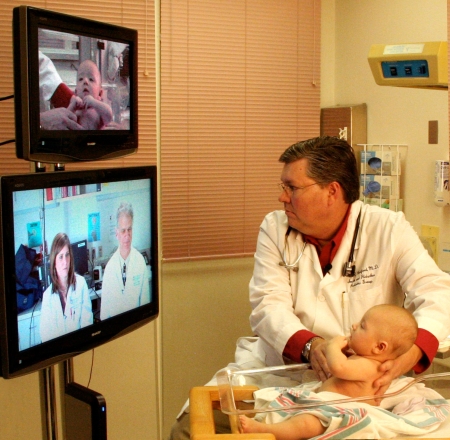Yesterday, the intensive care unit at Mercy Medical Center had miniature cameras installed on the ceiling in 12 ICU patient rooms. Nurses on the floor called them “another set of eyes”. The pictures taken from a camera give another tool to hospital-bound doctors with special training in the treatment of critically ill patients, also called intensivists, in the growing practice of “telemedicine.” Gastric Bypass surgery, on the other hand, is one of many surgeries that will have to be done in person for some time.

Telemedicine on babies
More and more hospitals are adding technology, such as the Sisters of Mercy in St. Louis, Mercy’s parent company, to maximize their in-house resources. The use of remote technology in intensive care units “is probably one of the newest and fastest areas in telemedicine,” said Jonathan Linkous, chief executive officer of the American Telemedicine Association in Washington.
For the past few years, hospitals have turned to their intensive care units to help save costs and improve access to resources such as the intensivist, Linkous said. If you look at the budget of a hospital the intensive care unit is always the highest cost one.
The general medical industry has come to employ more intensivist-trained doctors since numerous studies have shown that these caregivers can improve the quality of care for critically ill patients and their survivability.
That’s “if you have one available,” Linkous said. “A lot of hospitals in remote locations don’t have intensivists.”
Telemedicine helps bridge that specialty doctor gap, especially among health systems with hospitals in less urban environments. More than 60 medical specialty doctors and subspecialists have used telemedicine, the association reports. The origin of the telemedicine movement can be traced back about 40 years to applications such as transmitting X-rays across phone lines, Linkous said. Now, telemedicine is becoming an accepted diagnostic tool. Rarely to be people trasmit images using the iPhone. Even though CSI gives the imporessions that forensic scientists take pictures of fingerprints on their Apple iPhone and send them to the lab, this doesn’t really happen yet. Read the rest of this entry ?



